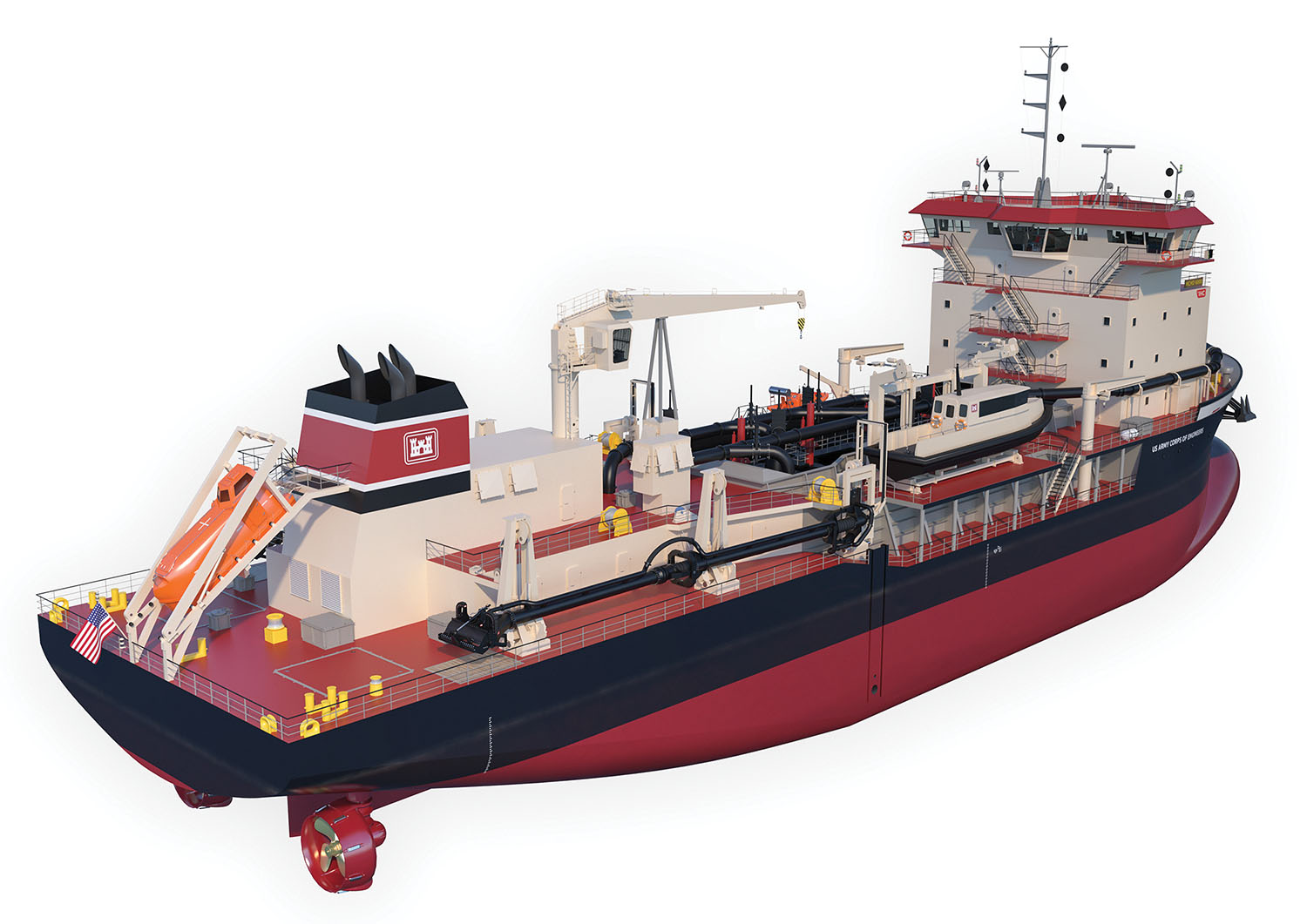Eastern Shipbuilding Group (ESG) has announced a strategic partnership with Royal IHC to design and build a highly automated hopper dredge for the U.S. Army Corps of Engineers.
The state-of-the-art medium-class hopper dredge will replace the 57-year-old dredge McFarland, based in the Philadelphia Engineer District.
To be constructed at Eastern’s Allentown and Port St. Joe shipyards, the 6,000-cubic-yard dredge is slated for delivery in 2027.
“Building on a history of successful collaboration, ESG and Royal IHC aim to deliver an unparalleled dredging vessel, incorporating ground-breaking design, engineering, dredging equipment and automation systems,” Eastern said in the announcement. “This partnership underscores ESG’s commitment to supporting its customers in achieving new levels of dredging efficiency and performance.”
Partnership
“Our partnership with Royal IHC exemplifies our longstanding commitment to working with the best in the industry to deliver superior vessels to our customers,” said Joey D’Isernia, CEO of Eastern Shipbuilding Group. “Our extensive experience in building highly mission-capable trailing suction hopper dredges in the U.S. positions us well to construct this exceptional vessel for the U.S. Army Corps of Engineers.”
The new dredge will be 320 by 72 feet with a hull depth of 28 feet. It will have a maximum dredge depth of 65 feet with the suction tube at 45 degrees. It will enter the Corps’ Ready Reserve Fleet and will play a critical role in the Corps’ navigation mission, providing for safe, reliable, effective and environmentally sustainable waterborne transportation systems for vital national security, commerce and recreation needs.
“The hopper dredge is designed to meet and exceed the mission-based operational requirements of USACE and features one of the most advanced configurations ever developed by Royal IHC,” said Leo van Ingen, area sales director for Royal IHC. The firm’s bulbous bow design is the basis for the relatively high maximum hopper capacity of 6,000 cubic yards, given the maximum vessel dimension requirements. Combined with optimum dredging efficiency, this results in significant fuel savings, Royal IHC said. The hopper can be fully loaded with medium fine sand in less than 45 minutes, and the available dredge pump power, together with the latest high-efficiency dredge pumps, almost halves the desired discharge time.
High Level Of Automation
“Another special feature of this hopper dredge is the high level of automation on board,” van Ingen said, citing the integrated forward-looking sonar system along with dynamic positioning and dynamic tracking systems in close concert with Dredging Assist capabilities. “This concept can advise and assist the dredge master on the best dredging techniques and improve overall efficiency by integrating various dredging automation systems. In addition, with the ECO package, the USACE’s new hopper dredge can load up to 15 percent more energy efficiently, reducing fuel consumption and environmental impact.”
The Dredging Assist system initiates the lowering and lifting of the suction pipes, unloading the soil through the bottom doors and the activation of the required dredge pumps and jet pumps, taking account of the desired valve configuration, auxiliary equipment and automatic controllers. All of these tasks can be executed fully autonomously with human monitoring.
The dredge will have Cutterspecial pumps, equipped with Royal IHC’s patented Curve impellers.
The environmental impact of the new hopper dredge is reduced by the patented Plumigator overflow, which reduces the release of air under and around the vessel caused by the overflow discharge plume. In addition, Royal IHC’s selected drag heads are also designed for both efficiency and interchangeability.
The hopper dredge will be equipped with a diesel-electric propulsion system that meets EPA Tier 4 and IMO Tier 3 standards. The set-up, consisting of three main generators, allows for maximum flexibility, optimal fuel consumption and operational safety in case of engine failure.
Caption for photo: New hopper dredge will replace the dredge McFarland in the Philadelphia Engineer District.




